Text
My Biggest and Most Annoying Fictional Horse Pet Peeve
Big Horses are a Very New Thing and they Likely Didn’t Exist in your Historical and/or Fantasy Settings.
You’ve all seen it in every historical piece of media ever produced. Contrary to popular belief, a big black horse with long legs and long flowing mane is not a widespread or even a particularly old type of horse.

THIS IS NOT A MEDIEVAL THING. THIS IS NOT EVEN A BAROQUE THING. THIS IS A NINETEENTH CENTURY CITY CARRIAGE HORSE.
All the love to fancy Friesian horses, but your Roman general or Medieval country heroine just really couldn’t, wouldn’t, and for the sake of my mental health shouldn’t have ridden one either.
Big warmblood horses are a Western European and British invention that started popping up somewhere around 1700s when agriculture and warfare changed, and when rich folks wanted Bigger Faster Stronger Thinner race horses.
The modern warmblood and the big continental draught both had their first real rise to fame in the 1800s when people started driving Fancy Carriages everywhere, and having the Fanciest Carriage started to mean having the Tallest and Thinnest Horses in the town.
Before mechanised weaponry and heavy artillery all horses used to be small and hardy easy-feeders. Kinda like a donkey but easier to steer and with a back that’s not as nasty and straight to sit on.
SOME REAL MEDIEVAL, ROMAN, OTTOMAN, MONGOL, VIKING, GREEK and WHATEVER HISTORICALLY PLAUSIBLE HORSES FOR YOU:
“Primitive”, native breeds all over the globe tend to be only roughly 120-140 cm (12.0 - 13.3 hh) tall at the withers. They all also look a little something like this:
Mongolian native horse (Around 120-130 at the withers, and decendants of the first ever domesticated horses from central Asia. Still virtually unchanged from Chinggis Khan’s cavalry, ancestor to many Chinese, Japanese and Indian horses, and bred for speed racing and surviving outdoors without the help of humans.)

Carpathian native horse / Romanian and Polish Hucul Pony (Around 120-150 at the withers, first mentioned in writing during the 400s as wild mountain ponies, depicted before that in Trajanian Roman sculptures, used by the Austro-Hungarian cavalry in the 19th century)

Middle-Eastern native horse / Caspian Pony (Around 100-130 at the withers, ancestor of the Iranian Asil horse and its decendants, including the famous Arabian and Barb horses, likely been around since Darius I the Great, 5th century BC, and old Persian kings are often depicted riding these midgets)
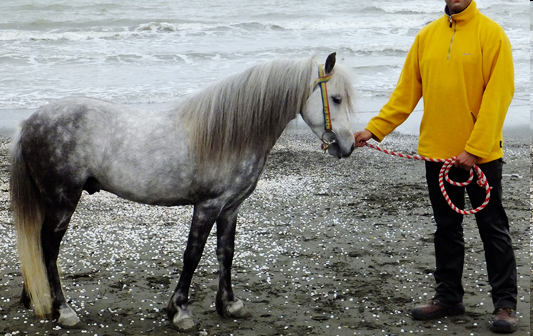
Baltic Sea native horse / Icelandic, Finnish, Estonian, Gotland and Nordland horses (Around 120-150 at the withers, descendant of Mongolian horses, used by viking traders in 700-900 AD and taken to Iceland. Later used by the Swedish cavalry in the 30 years war and by the Finnish army in the Second World War, nowadays harness racing and draught horses)

Siberian native horse / Yakutian pony (Around 120-140 at the withers, related to Baltic and Mongolian horses and at least as old, as well-adapted to Siberian climate as woolly mammoths once were, the hairiest horse there is, used in draught work and herding)

Mediterranean native horse / Skyros pony, Sardinian Giara, Monterufolino (Around 100-140 at the Withers, used and bred by ancient Greeks for cavalry use, influenced by African and Eastern breeds, further had its own influence on Celtic breeds via Roman Empire, still used by park ranger officers in Italy)
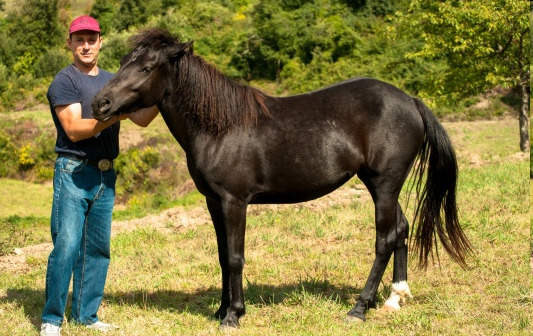
British Isles’ native horse / various “Mountain & Moorland” pony breeds (Around 100-150 at the withers, brought over and mixed by Celts, Romans and Vikings, base for almost every modern sport pony and the deserving main pony of all your British Medieval settings. Some populations still live as feral herds in the British countryside, used as war mounts, draught horses, mine pit ponies, hunting help and race horses)

So hey, now you know!
63K notes
·
View notes
Text
shoutout to flags that look like landscapes fr gotta be one of my favorite genders



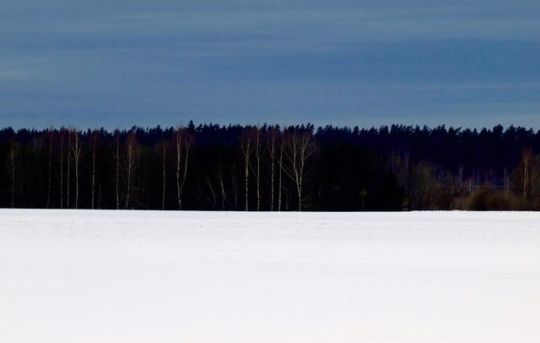
14K notes
·
View notes
Text
Are you sure you don't want to use The App?
This site looks better on The App!
Get The App!
Yes! Get me The App! • Not now...
Not now Not now Not Now Not now Not now Not Now Not now Not now Not Now
10K notes
·
View notes
Text
The latest numbers coming from Gaza state that there are about 77,575 injured Palestinians as of April 28, 2024.
I honestly see this number as a very humble one, but regardless, I said this in 2014 and it bears repeating: considering the types of weapons Israel is using in Gaza, the overwhelming majority of these injuries are severe and critical. So when we say that well over 77,000 people are injured in Gaza, we're talking about tens of thousands of people who have ended up with a lifelong disability. Thousands of amputees with no proper care. Thousands who will not be able to walk or see again. Many won't be able to go back to school or work again. Burn victims without the means to reduce or take the pain away. Many on life support and many more who will not even make it.
So many open wounds, both literally and figuratively, that we need to keep present in our conversation about Gaza.
2K notes
·
View notes
Text
I love animals that are, like, the opposite of cryptids: we know for a fact they exist and have a clear idea of what they look like because we have photographs and individual specimens, but we haven’t the faintest idea where they’re coming from - they just keep showing up out of nowhere, and the locations of their actual population centres are a complete mystery.
61K notes
·
View notes
Photo








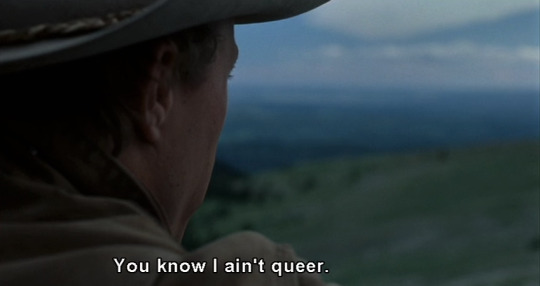

misha collins, salute to supernatural (creation entertainment), new jersey, 2022 / spn 5x04 “the end” / stands (april 25th, 2022) / this post by @casgirl / misha collins (april 26th, 2022) / cemetry gates, the smiths / lament for icarus, herbert james draper / litany in which certain things are crossed out, richard siken / brokeback mountain dir. ang lee (2005) / nice dream, radiohead
12K notes
·
View notes
Text
israel: *investigates its own war crimes and the murder of 2000+ palestinians*
israel: it was lawful and i’m innocent
2K notes
·
View notes
Text
Wait…
Isn’t Ed Balls day coming up?
ED BALLS DAY, I HAVE TO GET READY TO CELEBRATE

179K notes
·
View notes
Text
Having a therapist who isn't used to trans patients will truly have you feeling like Koko the gorilla trying to articulate your feelings in a coherent way. "No peepee huge honkers, I cry? Huge honkers no peepee, sadness, doctor."
#briefly had a therapist who characterised my pre-transition self as a split personality#she was lovely but didn't quite get it#thought my deadname was like the name of that other personality#funny part is that I don't exactly consider my consciousness to be single anyway just. not like that
3K notes
·
View notes
Text
This is a Tesla model Y battery. It takes up all of the space under the passenger compartment of the car. To manufacture it you need:
--12 tons of rock for Lithium (can also be extracted from sea water)
-- 5 tons of cobalt minerals (Most cobalt is made as a byproduct of processing copper and nickel ores. It is the most difficult and expensive material to obtain for a battery.)
-- 3 tons nickel ore
-- 12 tons of copper ore
You must move 250 tons of soil to obtain:
-- 26.5 pounds of Lithium
-- 30 pounds of nickel
-- 48.5 pounds of manganese
-- 15 pounds of cobalt
To manufacture the battery also requires:
-- 441 pounds of aluminum, steel and/or plastic
-- 112 pounds of graphite
The Caterpillar 994A is used to move the earth to obtain the minerals needed for this battery. The Caterpillar consumes 264 gallons of diesel in 12 hours.
The bulk of necessary minerals for manufacturing the batteries come from China or Africa. Much of the labor in Africa is done by children. When you buy an electric car, China profits most.
The 2021 Tesla Model Y OEM battery (the cheapest Tesla battery) is currently for sale on the Internet for $4,999 not including shipping or installation. The battery weighs 1,000 pounds (you can imagine the shipping cost). The cost of Tesla batteries are:
Model 3 -- $14,000+ (Car MSRP $38,990)
Model Y -- $5,000–$5,500 (Car MSRP $47,740)
Model S -- $13,000–$20,000 (Car MSRP $74,990)
Model X -- $13,000+ (Car MSRP $79,990)
It takes 7 years for an electric car to reach net-zero CO2. The life expectancy of the battery is 10 years (average). Only in the last 3 years do you start to reduce your carbon footprint, but then the batteries must be replaced and you lose all gains made.
And finally, my new friend, Michael, made some excellent points: I forgot to mention the amount of energy required to process the raw materials and the amount of energy used to haul these batteries to the U.S. sometimes back and forth a couple of times.
But by all means, get an electric car. Just don't sell me on how awesome you are for the environment. Or for human rights.
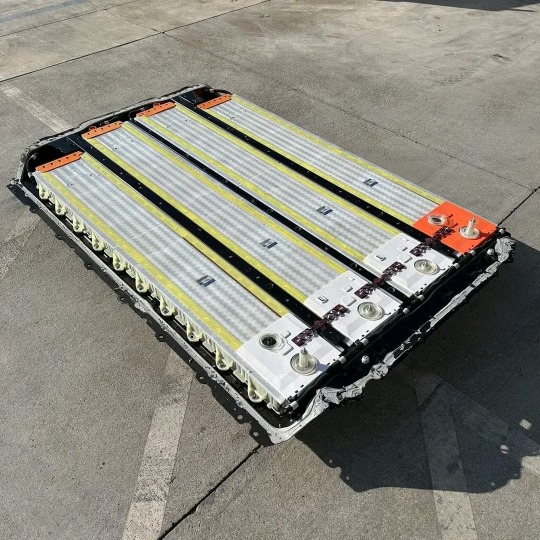
33 notes
·
View notes
Text

i love you star trek,,, i love you muppets,,, i love you star trek muppets
991 notes
·
View notes
Photo
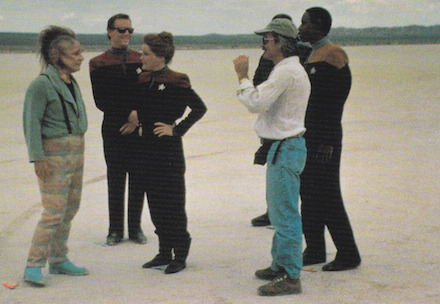

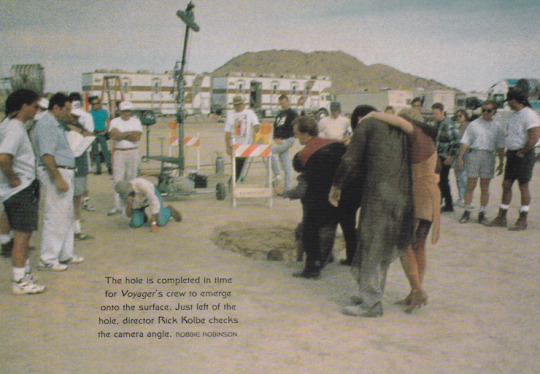
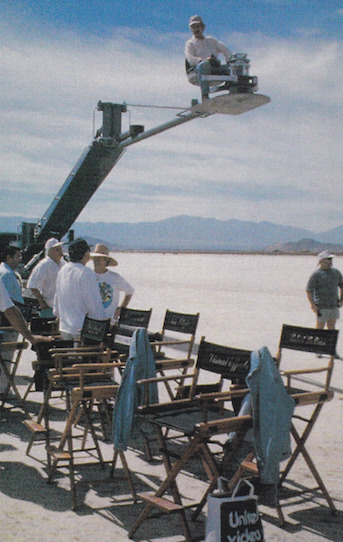

Behind the Scenes of Star Trek: Voyager pilot episode: Caretaker
Photo 1: Sharing a break in the filming, veteran director Rick Kolbe discusses the next shot with the new captain and the crew.
Photo 2: The script called for the Voyager crew to escape to the surface via a hole in the ground. However, it’s up to the Voyager production crew to dig the hole.
Photo 3: The hole is completed in time for Voyager’s crew to emerge onto the surface. Just left to hole, director Rick Kolbe checks the camera angle.
Photo 4: On location, during filming for the pilot. Even on location, in the middle of the desert, the director’s chairs are sacrosanct.
Photo 5: Rich Kolbe pauses to share some insights with Kate Mulgrew.
Taken from “A Vision of The Future: Star Trek Voyager” Stephen Edward Poe 1998 - Photos by Robbie Robinson. (X)
261 notes
·
View notes




